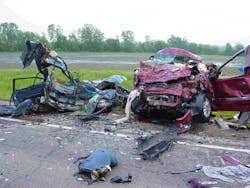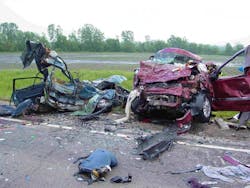The group said that approximately some 36,200 motor vehicle fatalities occurred in 2012, along with 3.9 million injuries – a 5% upswing for both metrics compared to 2011. Indeed, NSC added that the jump in fatalities is the first increase since the 2004/2005 measurement period – certainly not an accomplishment anyone wants to cheer about.
“We’re greatly concerned with the upswing in traffic fatalities on our nation’s roads,” noted Janet Froetscher, NSC’s president and CEO, in a statement. “Although we have improved safety features in vehicles today, we also have new challenges – especially as it relates to teen and distracted driving – that need to be addressed on a national scale. We must work together now to reverse this latest trend.”
[One strategy NSC believes can help “reverse this trend,” as Froetscher said, is to get more states to pass “graduated driver’s license” or GDL laws.]
So, what does NSC believe is behind these spikes in motor vehicle fatalities and injuries? Well, for starters, the group points out that “total miles driven” across the U.S. has been rising since December 2011, with some of that increase in mileage driven due to what it calls an “improving economy” combined the mild winter weather across much of the U.S. last year.
The group also noted that motor vehicle crashes carry significant costs for the in terms of lost wages and productivity, increased medical expenses, administrative expenses, employer costs and property damage.
[The human tragedy of traffic fatalities, however, is just immeasurable. The story below is painful to watch; especially since it all occurred to a single incidence of distracted driving.]
Indeed, the estimated cost of motor vehicle deaths, injuries and property damage in 2012 topped $276.6 billion, NSC calculated – again a 5% increase from 2011.
That’s a staggering bill, even before one begins to factor in the human tragedy implicit in such crashes. Let’s hope then that we can once again reverse this terrible trend.

